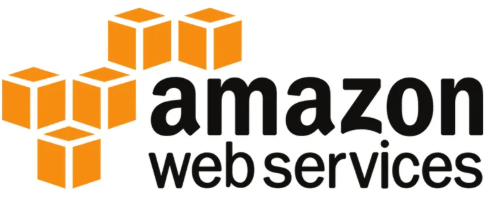(SAA-C01)
 The AWS Certified Solutions Architect – Associate examination is intended for individuals who perform a solutions architect role and have one or more years of hands-on experience designing available, cost-efficient, fault-tolerant, and scalable distributed systems on AWS.
The AWS Certified Solutions Architect – Associate examination is intended for individuals who perform a solutions architect role and have one or more years of hands-on experience designing available, cost-efficient, fault-tolerant, and scalable distributed systems on AWS.
Abilities Validated by the Certification
- Effectively demonstrate knowledge of how to architect and deploy secure and robust applications on AWS technologies
- Define a solution using architectural design principles based on customer requirements
- Provide implementation guidance based on best practices to the organization throughout the life cycle of the project
Recommended Knowledge and Experience
- Hands-on experience using compute, networking, storage, and database AWS services
- Hands-on experience with AWS deployment and management services
- Ability to identify and define technical requirements for an AWS-based application
- Ability to identify which AWS services meet a given technical requirement
- Knowledge of recommended best practices for building secure and reliable applications on the AWS platform
- An understanding of the basic architectural principles of building on the AWS Cloud
- An understanding of the AWS global infrastructure
- An understanding of network technologies as they relate to AWS
- An understanding of security features and tools that AWS provides and how they relate to traditional services
Exam Duration – 130 minutes Prerequisite – None Number of Questions – 65 (may vary) Registration Fee – 150 USD Exam Format – Multiple-choice and Multiple-answer questions Exam Language – English, Korean, Japanese, and Simplified Chinese Renewal – Every 2 years Content Outline Domain 1: Design Resilient Architectures 34% Domain 2: Define Performant Architectures 24% Domain 3: Specify Secure Applications and Architectures 26% Domain 4: Design Cost-Optimized Architectures 10% Domain 5: Define Operationally Excellent Architectures 6% TOTAL 100%
Content Outline
I.Introduction to Cloud Computing
2.Similar concepts
3.Characteristics
4.Service models
4.1 Infrastructure as a service (IaaS)
4.2 Platform as a service (PaaS)
4.3 Software as a service (SaaS)
4.4 Mobile “backend” as a service (MBaaS)
4.5 Serverless computing
4.6 Function as a service (FaaS)
4.7 Firewall as a Service(FWaas)
5.0 Deployment models
5.1 Private cloud
5.2 Public cloud
5.3 Hybrid cloud
6.Architecture
7.Security and privacy
8.Limitations and disadvantages
II.Virtualization
Introduction
DEPLOYING VIRTUAL MACHINES
HYPERVISOR
Type1 Hypervisor, Type2 Hypervisor
Types of Hardware Virtualization
- Full Virtualization
- Emulation Virtualization
- Paravirtualization
III. AWS Solutions Architect – Associate
History Of AWS
AWS Cloud Architecture & Infrastructure Details
- A Region and Availability Zone
- About Edge Locations
- AWS Cloud Legal & Compliance Overview
AWS Elastic Compute Cloud Services(EC2)
- Indroction Elastic Compute Cloud EC2
- Security Groups
- Types of instances offered by AWS in EC2
- Configure and Deploy EC2 instances.
- Configuring Key Pairs
- Create EC2 Instance (Both Windows and Linux Instance)
- Configure in windows IIS and Linux Apache
- Working with Amazon Machine Image
- Elastic Block Store Volumes Use Cases
- Elastic IP Addressing
- Feature of Elastic Compute Cloud
- AWS Pricing & Calculating
- About Autoscaling & Use Cases
IAM & Monitoring Services
- Identity and Access Management (IAM)
- Creation of Users & Groups in IAM
- Authorization & Authentication for Users & Groups
- Multi-Factor Authentication using MFA Device
AWS Storage Services(S3)
- Simple Storage Service (S3)
- Creating S3 Bucket.
- Storages Classes in S3 Bucket
- Cross Region Replication
- Versioning in S3
- Static Website Hosting
- Cross Region Replication of Data through S3
- AWS Elastic File System & its Advantages
Amazon AWS Route 53
- What is DNS
- Type of DNS Queries(Iterative and Recursive)
- DNS Record Types (Host A , AAAA ,CNAME, MX, PTR, SRV Resource Records)
- Features of Route 53
- Configuring AWS Route 53
- Connecting Route 53 with Public DNS Service Providers
- Route 53 with Load-balancing
Amazon Web Services Network Services with VPC
- Introduction to AWS Cloud Networking services
- Virtual Private Cloud Setup
- Public & Private Subnets Creation within a VPC
- Configuring Internet Gateway
- Network Address Translation (NAT) Gateway
- Use Case of NAT Gateway
- Establishing Connection between two VPCs through VPC Peering
- Use both windows and linux EC2 instance
AWS Relational Database Service(RDS)
- About RDS
AWS Monitoring & Notification Services
- AWS Cloud Watch
- Simple Notification Service (SNS)
- Amazon Simple Queue Service (SQS)
- AWS billing Notification

